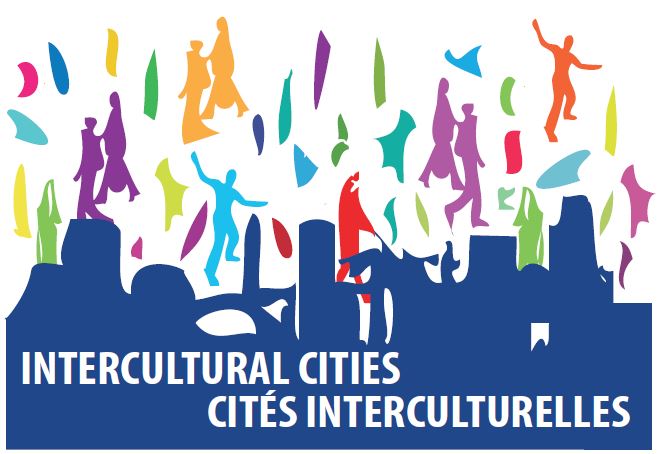Culture and citizen participation play a key part in Montreal’s inclusion and well-being policies, which is undoubtedly a factor that contributes to its great dynamism.
The intercultural dimension is present in all the projects involving closer intercultural ties and combating discrimination against ethnocultural communities. The city’s executive committee assesses applications for support from this angle. In addition, projects submitted to the political decision-making bodies through the relevant administrative mechanisms must tie in with action 9 of the Sustainable Montreal 2016-2020 action plan (“Fight inequality and promote inclusiveness”).
In terms of policies, Montreal in 2017 launched the 2017-2022 Cultural Development Policy, Combining creativity and the citizen cultural experience in the age of digital technology and diversity. As its name indicates, this policy puts diversity centre stage and seeks to foster full participation by all residents in all neighbourhoods, as well as cultural mobility throughout all of Montreal. The aim is to encourage measures that provide opportunities for Montrealers from all backgrounds to meet and come closer together, encourage them to find out more about one another and facilitate exchanges in an inclusive and fair manner through the city’s various facilities, activities and services (cultural centres, libraries, museums, festivals and events, cultural recreation, activities showcasing public art, heritage and design, etc.). This policy also forms part of a process of reconciliation with the Indigenous peoples and building bridges between the English-speaking and French-speaking communities.
In addition, the Culture Department runs several programmes – for cultural organisations – designed to encourage diversity and intercultural relations through the approaches and activities supported, in terms both of heritage programmes and of cultural mediation and cultural recreation programmes.
In this connection, the Accès culture network, which comprises the cultural centres and local culture teams of all Montreal boroughs, is currently developing a diversity action plan designed to reach out to newcomers and minorities and promote their participation and inclusion through a wide range of activities. In 2010, it set the target of increasing the share of culturally diverse performances in its programming from 9% to 15% to better represent Montreal’s sociodemographic reality and encourage people to find out about other cultures and engage in intercultural dialogue. By 2017, the figure had already reached 14%. Under the plan, the network is committed to increasing the representation of diverse cultures in its work teams, programming and target groups.
At the same time, since 1998 Montreal has been providing premises free of charge for Montréal arts interculturels (MAI), a body whose remit is to present works addressing diversity and intercultural relations and support intercultural art forms. In particular, the support programme run by MAI provides artists with annual assistance for the development of their intercultural art practices and their integration in the arts community. This is supplemented by a series of activities called “Public +” which give the public opportunities to find out more about intercultural arts.
The city also supports DAM, Diversité artistique Montréal, whose remit is to promote cultural diversity in the arts and culture by promoting the recognition and inclusion of all artists and art forms in professional networks, cultural institutions and distribution circuits in Montreal.
For its part, the Montreal arts council, Conseil des arts de Montréal, has for several years been running an action plan to promote and encourage the presence of culturally diverse artists and practices in the Montreal cultural scene. It has developed reception and advice services and programmes (paid traineeships, residencies, support, awards, creation and distribution support) aimed at showcasing and promoting the fair representation of such artists and thereby contributing to intercultural dialogue. In particular, the DÉMART traineeship programme enables professionals from culturally diverse backgrounds to work for arts bodies, while the touring programme promotes the presentation in the boroughs of works concerning diversity so as to bring about greater dialogue with Montrealers.
Moreover, under the strategic plan for libraries for 2016-2019, one of the priorities was to contribute to the development of an inclusive and committed community, through partnerships, services and activities tailored to multi-ethnic target groups.
It must also be noted that Montreal encourages intercultural exchanges through the programmes run in the city’s various sports facilities. The city supports several projects with a major social impact here, including an inter-borough street games project. With funding of C$75 000 for winter and summer games, the city helps the organisation, Street Action Youth Prevention (RAP Jeunesse) to conduct sports and cultural activities for some 2 000 young Montrealers aged 12 to 24, with a special focus on marginalised young people who are excluded from traditional sporting networks and young people from diverse cultural communities. It also hires around 100 young people during the activities to help organise the events.
Lastly, under an Agreement on Cultural Development, the city and the Ministry of Culture and Communications support measures in four different areas: heritage, cultural neighbourhoods and citizen cultural experience, digital technology, and cultural entrepreneurship. In this connection, apart from the activities already mentioned in terms of neighbourhood policies, several boroughs have developed local cultural plans focusing on openness to diversity, thereby reflecting the sociodemographic realities of the population and fostering social cohesion and intercultural relations (in particular, Ahuntsic–Cartier-Ville, Saint-Léonard and Saint-Laurent).



